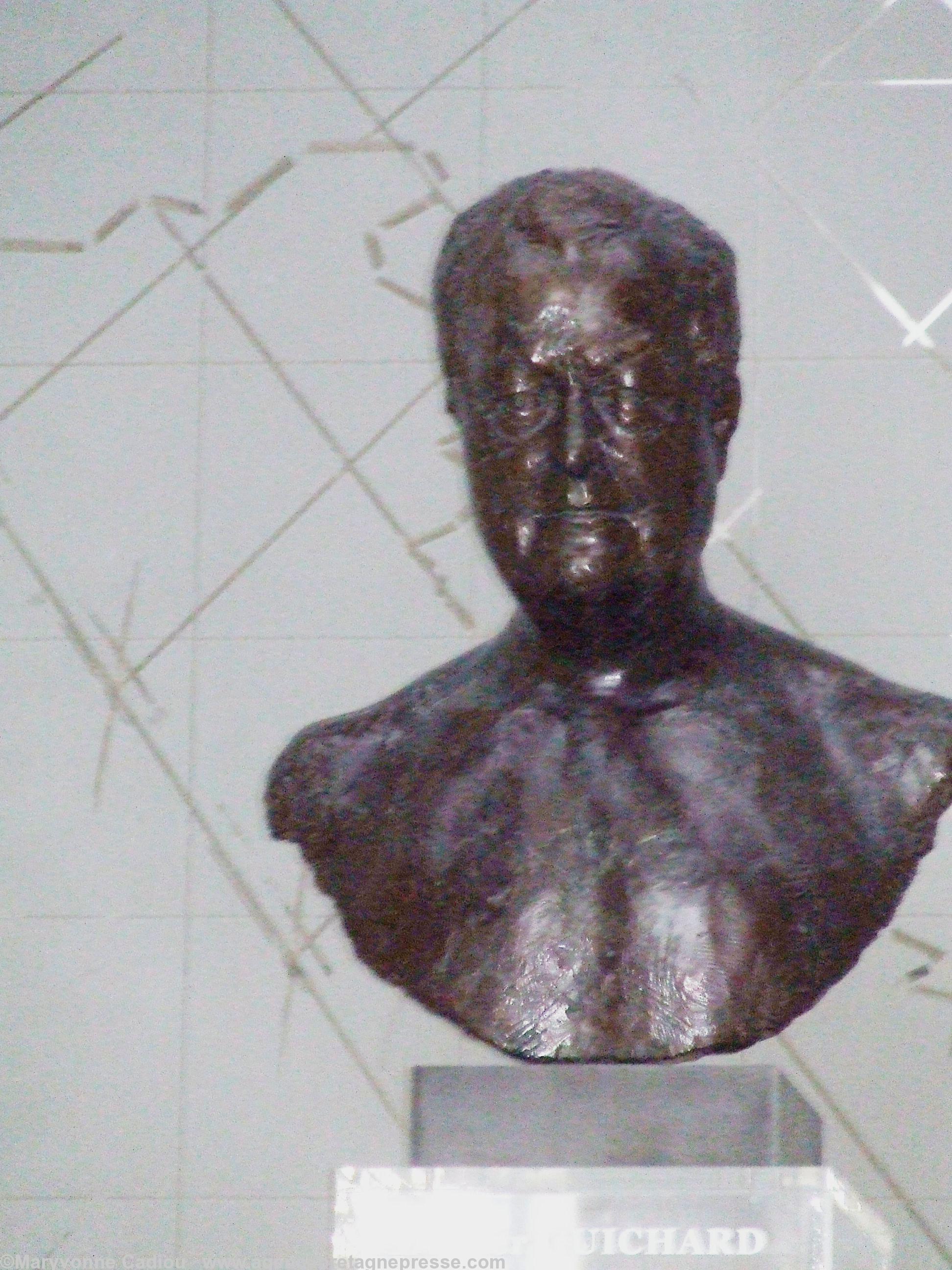
A man who many, both inside and outside Brittany, see as one of the architects of the countries division has had a statue unveiled to his memory.
In a testament to the contempt with which his memory is recorded by many Bretons, his statue has been sited in a safe place where authorities hope that it will be secure from attack.
Rhisiart Tal-e-bot Secretary General of the Celtic League comments on the ceremony below:
Following a meeting with world business leaders in La Baule, Brittany, the new Prime Minister of France, François Fillon stopped off in Nantes to unveil a statue of Olivier Guichard.
Olivier Guichard sided with the Admiral Darlan faction initially in WW 2, but was later a confident of President Charles de Gaulle. He exhibited all the chameleon attributes of key players on the French right being able to "change his political complexion" to order.
He was instrumental in the administrative severing of Loire-Atlantique from Brittany in 1941 for which he has earned the lasting contempt of Breton nationalists and also those in the wider inter-Celtic movement who support the right of Brittany to be a unified and independent State. He was also the first President of the artificial Pays de Loire region and was succeeded by Francois Fillon himself.
Guichard's newly erected statue stands inside the regional council building of Pays de Loire for fear it will be defaced, because many feel that Guichard was as much to blame as Petain for the continued division of Brittany.
François Fillon has been one of France's most vocal opponents of the reunification of the Loire-Atlantique department with Brittany. Loire-Atlantique, with its capital in Naoned/Nantes, is now part of the Pays de Loire region. The majority of the inhabitants of Loire-Atlantique desire reunification with Brittany and the Regional Council of Brittany and the General Council of Loire-Atlantique have both voted in favour of reunifying this annexed Breton region with the rest of Brittany.
However, there are some influential forces acting against the campaign for unification, mainly from the Socialists and including the Mayor of Naoned/Nantes.
This news will come as no surprise to those who know anything about Fillon's political history as a right wing French Jacobine like Sarkozy, but what may be of interest to some is that Fillon's wife is Welsh.
Fillon's wife, Penelope Kathryn Clarke, was born in the village of St Bartholomew, Llanover, near Abergavenny in Wales and they were married in the bride's family church in June 1980. Fillon's younger brother, Pierre, later married Penelope Fillon's younger sister, Jane.
As the new Prime Minister's wife, Penelope Kathryn Clarke is likely to become the talk of French society as the first Welsh woman to enter the Palais Matignon, the French equivalent of 10 Downing Street.
However, as some in Brittany have wondered, will Penny - as she likes to be known - have any influence on François Fillon political views? Probably not. Mr Fillon is still against Breton reunification and his latest act of attending the unveiling ceremony of Guichard, confirms that he is likely to remain so.
Note: The re-integration of Loire-Atlantique with the rest of Brittany is a long term objective of the Celtic League. Teh Bretagne Réunie association works at it too.
J B Moffatt Director of Information Celtic League
02/06/07
 The Celtic League has branches in the six Celtic Countries. It works to promote cooperation between these countries and campaigns on a broad range of political, cultural and environmental matters. It highlights human rights abuse, monitors all military activity and focuses on socio-economic issues.
TEL (UK) 01624 877918
MOBILE (UK)07624 491609
(voir le site)
The Celtic League has branches in the six Celtic Countries. It works to promote cooperation between these countries and campaigns on a broad range of political, cultural and environmental matters. It highlights human rights abuse, monitors all military activity and focuses on socio-economic issues.
TEL (UK) 01624 877918
MOBILE (UK)07624 491609
(voir le site)
